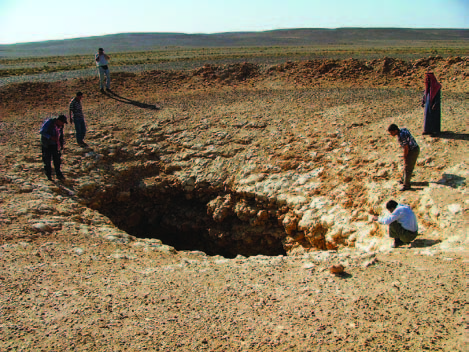Hypogene Point Karstification along Wadi Sirhan Graben (Jordan): A Sign of Oilfield Degassing?
DOI:
https://doi.org/10.3986/ac.v41i1.46Keywords:
Jordan, hypogene caves, sinkholes, oil fields, methaneAbstract
Jordan is a country with a large area of limestone. Nevertheless, only a few limestone caves are known. Here we report about two caves along Wwadi Sirhan Graben of Jordan that appear to have formed by stoping upward of collapsed deep-seated hypogene cavities along breccia pipes. The first one, Uwaiyed Cave, is a small breakdown-dominated chamber in basalt of the Naslet Al-Dhirwa volcano; the second, Beer Al-Malabeh, is a large, bell-shaped sinkhole that has geologically recently opened up to the surface. Wwe discuss the possible processes that led to their formation. The review of the existing stratigraphy as obtained by oil well drilling suggests that no salt layers occur below the caves. Gypsum layers seem to be limited to 4 m in thickness, probably not enough to form the observed features. The remaining process is dissolution caused by ascending gas (H2S or CH4) -rich waters from the underlying oil and oil-shale fields. Wwhen such solutions reach the water table, bacterial oxidation may create enough dissolutional power to form localized and large cavities. Their collapse could lead to the observed collapse structures and would explain the paucity of other cave structures throughout southeastern Jordan.
Keywords: Jordan, hypogene caves, sinkholes, oil fields, methane.
Downloads

Downloads
Published
How to Cite
Issue
Section
License
Authors guarantee that the work is their own original creation and does not infringe any statutory or common-law copyright or any proprietary right of any third party. In case of claims by third parties, authors commit their self to defend the interests of the publisher, and shall cover any potential costs.
More in: Submission chapter




